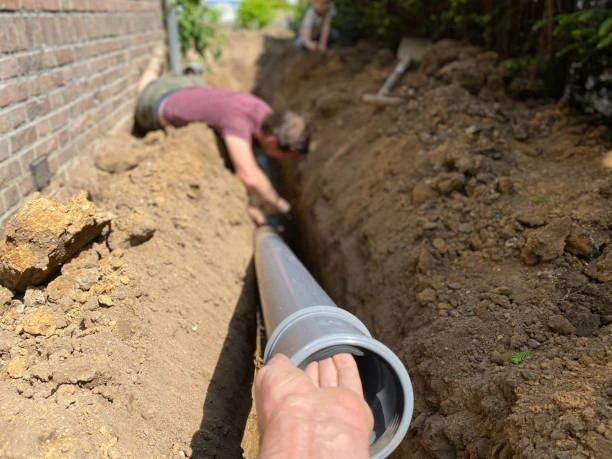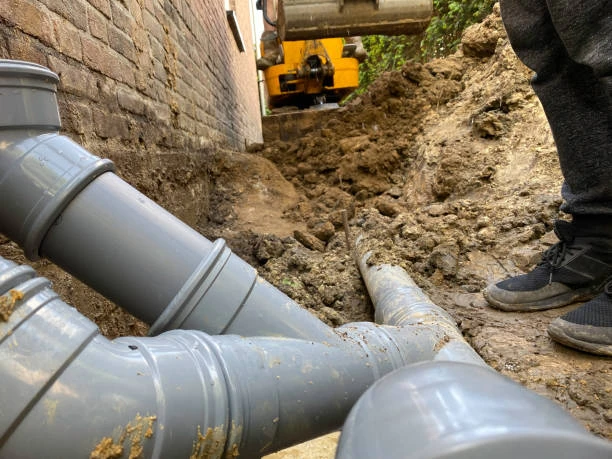As the world grapples with the pressing challenges of climate change and environmental degradation, the quest for sustainable solutions in various industries has become paramount. One area that is seeing significant innovation and transformation is the plumbing and construction sector, particularly with the development of sustainable pipes. This article explores the concept of sustainable pipes, their benefits, current advancements, and the future they promise for both the environment and the industry.
Understanding Sustainable Pipes
Sustainable pipes refer to piping materials and systems designed to minimize environmental impact throughout their lifecycle. This includes their production, usage, and disposal. The goal is to reduce waste, conserve resources, and ensure a healthier ecosystem.
Key Characteristics of Sustainable Pipes
- Eco-Friendly Materials: Sustainable pipes are made from renewable, recyclable, or biodegradable materials. This reduces reliance on fossil fuels and minimizes waste.
- Energy Efficiency: The manufacturing process of sustainable pipes often requires less energy compared to traditional materials, contributing to lower carbon emissions.
- Durability and Longevity: High-quality sustainable pipes are designed to last longer, which reduces the frequency of replacements and the associated environmental impact.
- Reduced Water Waste: Many sustainable pipe systems are engineered to minimize leaks and enhance water conservation.
The Importance of Sustainable Pipes
The increasing demand for sustainable infrastructure has placed significant emphasis on the importance of sustainable pipes. Here are some key reasons why they matter:
1. Environmental Protection
With the construction and plumbing industries being significant contributors to waste and pollution, adopting sustainable pipes can help mitigate environmental damage. Sustainable materials reduce the extraction of raw materials and minimize landfill contributions.
2. Resource Conservation
By using renewable or recycled materials, sustainable pipes help conserve natural resources. This is crucial as the global population continues to grow, increasing the demand for water and energy.
3. Economic Benefits
Investing in sustainable piping systems can lead to long-term cost savings for consumers and businesses. While the initial investment may be higher, the durability and efficiency of these systems can result in lower maintenance and utility costs.
4. Regulatory Compliance
As governments worldwide implement stricter environmental regulations, adopting sustainable pipes can help companies comply with these laws, avoiding penalties and enhancing their reputation.
Types of Sustainable Pipes
Several types of sustainable pipes are gaining traction in the market. Here are some notable examples:
1. Recycled PVC Pipes
Recycled polyvinyl chloride (PVC) pipes are made from post-consumer waste. They offer similar performance to virgin PVC while significantly reducing plastic waste.
2. HDPE Pipes
Manufacturers produce High-Density Polyethylene (HDPE) pipes, which are known for their strength and flexibility. They can use recycled materials to create these pipes, and consumers can fully recycle them at the end of their lifecycle.
3. Biodegradable Pipes
Innovations in material science have led to the development of biodegradable pipes made from natural polymers. These pipes can decompose in landfill conditions, reducing long-term waste.
4. Copper Pipes
Copper is naturally durable and recyclable. Manufacturers source sustainable copper pipes from recycled materials, and these pipes can last for decades, making them a responsible choice for plumbing systems.

Innovations in Sustainable Pipe Technology
The evolution of sustainable pipes has been driven by ongoing research and technological advancements. Here are some noteworthy innovations:
1. Smart Pipe Technology
Smart pipes equipped with sensors can monitor flow rates, pressure, and leak detection in real-time. This technology enhances efficiency and reduces water waste.
2. Self-Healing Materials
Emerging technologies have led to the development of self-healing pipe materials. These pipes can automatically seal small cracks and leaks, extending their lifespan and reducing maintenance needs.
3. 3D Printing
3D printing technology allows for the creation of customized pipe systems using sustainable materials. This innovation reduces waste and enables efficient production processes.
4. Integrated Filtration Systems
Some sustainable pipes come with built-in filtration systems that improve water quality and reduce contaminants, promoting healthier water supply systems.
The Future of Sustainable Pipes
As the demand for sustainable solutions continues to rise, the future of sustainable pipe looks promising. Here are some trends and predictions:
1. Increased Adoption
As awareness of environmental issues grows, more construction and plumbing companies will adopt sustainable piping solutions. This trend is likely to be driven by consumer demand and regulatory pressures.
2. Research and Development
Investments in research and development will lead to new materials and technologies that enhance the sustainability of pipes. Innovations in nanotechnology and bioplastics may open new avenues for eco-friendly solutions.
3. Circular Economy Practices
The concept of a circular economy, where manufacturers reuse and recycle materials, will play a significant role in the sustainable pipe industry. They will focus on creating products that can be easily disassembled and repurposed.
4. Collaboration Across Sectors
The push for sustainable pipe will require collaboration between manufacturers, researchers, government agencies, and environmental organizations. Such partnerships can drive innovation and improve standards across the industry.
Challenges Facing Sustainable Pipes
Despite the promising future of sustainable pipes, several challenges must be addressed:
1. Higher Initial Costs
While sustainable pipe often provide long-term savings, their initial costs can be higher than traditional options. This may deter some consumers and businesses from making the switch.
2. Market Awareness
Many consumers are still unaware of the benefits of sustainable pipe. Educating the public and industry professionals about these advantages is crucial for increasing adoption.
3. Regulatory Barriers
Existing regulations may not always favor sustainable materials. Advocating for updated standards that promote eco-friendly options is necessary to facilitate broader acceptance.
4. Technological Limitations
While innovations are underway, some sustainable materials may still face performance challenges compared to traditional options. Continued research is needed to address these limitations.
Conclusion
Sustainable pipe represent a crucial step toward a more environmentally responsible future in the plumbing and construction industries. With their potential to reduce waste, conserve resources, and enhance economic efficiency, these innovative solutions are more than just a dream—they are becoming a reality. As the industry continues to evolve, embracing sustainable practices will be essential for creating a healthier planet for future generations.
FAQs
- What are sustainable pipe? Manufacturers create sustainable pipes using eco-friendly materials designed to minimize environmental impact throughout their lifecycle.
- What are the benefits of using sustainable pipes? Benefits include reduced environmental impact, resource conservation, long-term cost savings, and regulatory compliance.
- What types of sustainable pipe are available? Manufacturers commonly produce recycled PVC pipes, HDPE pipes, biodegradable pipes, and sustainable copper pipes.
- How does technology influence sustainable pipe? Innovations like smart technology, self-healing materials, and 3D printing enhance the performance and sustainability of piping systems.
- What challenges do sustainable pipe face? Challenges include higher initial costs, market awareness, regulatory barriers, and technological limitations.


















